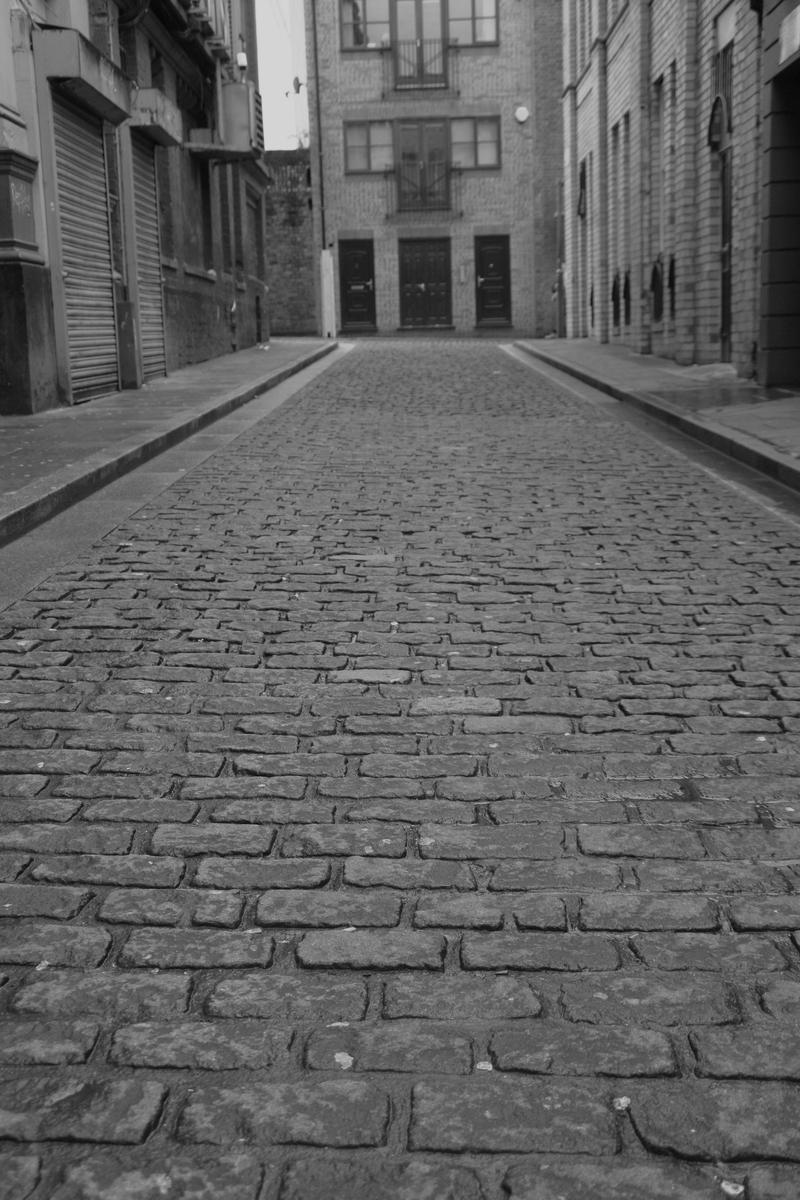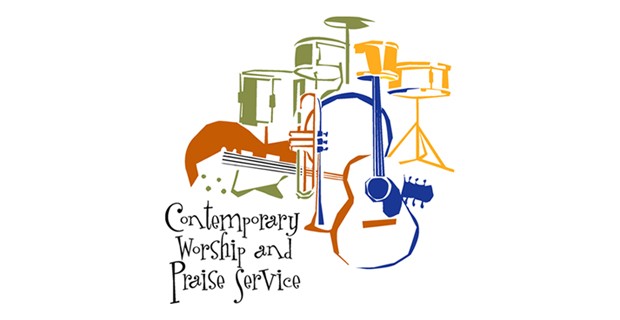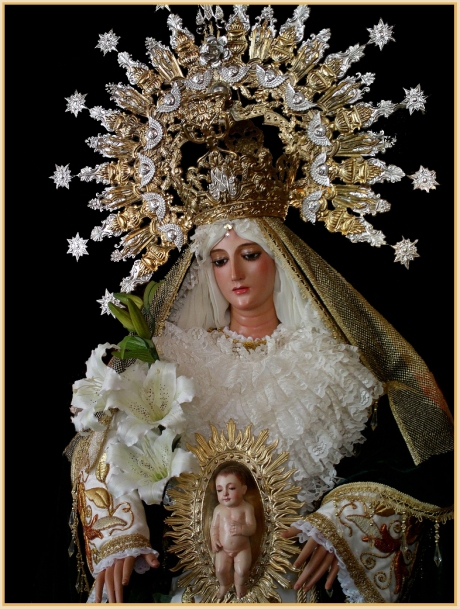By PATRICK O'HANNIGAN on 6.17.13 @ 6:07AM
Reassessing the quarrel between the power ballad and the hymn.
Remember the power ballad? It was a subgenre of rock music pioneered by Boston in 1976 and Styx a year later. From near-symphonic beginnings in “More Than a Feeling” and “Come Sail Away,” the power ballad elbowed its way to prominence in the early Eighties.
Tom Scholz of Boston and Dennis DeYoung of Styx welded songwriting craftsmanship to imaginative orchestration and “wall of sound” microphone placements, mixing electric and acoustic guitars in tunes that did more than build to crescendos. Artists like Bonnie Tyler and REO Speedwagon then parlayed their own examples of the form into successful recording careers.
Power ballad pioneers play now in places like state fairs. But when the power ballad fell out of fashion, it found a home among the “praise bands” of “Christian Rock.” Where power ballads go, praise bands follow. That unabashedly Christian lyrics can be heard on FM radio is a good thing, but that power ballads also enabled praise bands to displace so many church choirs ought to give us pause. Power ballads are not hymns. That is precisely the problem with singing them during church services, even — perhaps especially— services aimed at younger people.
Praise bands replaced many traditional choirs in part because church musicians were not always conscious of their own assumptions. They listened to car radios while driving to rehearsals. Like everyone else, they smiled at the playful grunge of “Spirit in the Sky” and the crypto-Christian bonhomie of “Get Together.” Hook-laden songs on the FM dial were more fun to play than old-timey hymns that required little or no instrumental accompaniment, and so garage bands at every conceivable talent level reasoned that only cranks would be critical of Sunday services enlivened by rock, jazz, and reggae rhythms.
Yet inattention and sloppy theology did not by themselves expand the reach of the power ballad into formal worship. When the folk revival of the Sixties brought “Kumbaya” out from the campfire circle and into the sanctuary, the mavens of mainstream culture noticed, mounting productions of Jesus Christ, Superstar andGodspell to critical acclaim. Christian influence was part of the musical mix of the time, even if only as a foil for other things. Eventually the coming of “arena rock” pushed folk musicians back into Greenwich Village and the coffee house circuit influenced by that iconic neighborhood. As folk music lost ground to rock groups playing for larger audiences, the praise band subculture saw an opening and sprinted for it with instruments in tow. Musicians who had previously played sweltering summer concerts under revival tents realized that they could play in church, which was a better place to gig than anything outdoors because it had air conditioning.
Praise bands took longer to find acceptance in Catholic parishes, but find it they did, when “Guitar Masses” became a chew toy in the perennial argument between traditionalists and progressives. The praise band influence might have been more decisive in the pews had it not been for a pair of distinctively Catholic attributes: First, the doctrine of the real presence of Jesus in the Eucharist emphasizes reverence in Catholic worship to a greater degree than is usually cultivated by Protestant assemblies. Second (and also by design), the Catholic Church is incapable of rapid change. Despite those constraints, praise band and power ballad influence made itself felt.
People who never used works like “immanence” and “transcendence” nevertheless realized that Jesus-among-us thinking had outpaced Jesus-beyond-us thinking, and composers smitten with concepts like “inculturation” and the “spirit of Vatican II” did what they could to shoehorn new music into the liturgy of the church, with decidedly mixed results. What Anthony Esolen once called “the necessary hypocrisy of small talk” was raised to the status of a liturgical act. Meanwhile, among Christians of all confessions, advances in technology spawned by arena rock also created cheap amplifiers that could fill a room with sound.
Architecture was part of the same populist impulse. By the time power ballads entered worship service, narrow naves were outdated. Instead, church designers experimented with forms borrowed from theater-in-the-round, turning what had been Gothic, Baroque, Neo-Classical and even Shaker-inspired construction into Sydney Opera House knockoffs or boxy-looking warehouses. With churches built more wide than high in apparent reparation for the triumphalism of the Middle Ages, it was easy to fit a drum kit and a Hammond organ up near the pulpit. Choirs that had led the congregation from the back moved forward also, but by then the instrumentalists had claimed all the good spots.
Rocking for Jesus was easier than reworking gems like “Holy God We Praise Thy Name.” In self-consciously “seeker friendly” congregations, bias against traditional hymnody was justified on the grounds of meeting potential churchgoers where they were emotionally. That rationale for praise band dominance meant that worship leaders were unwittingly abrogating to themselves an outreach that belonged to the Holy Spirit, but anyone who questioned the bias toward concertizing was more likely to win a sympathetic hearing among “high church” Christians than among people wary of all things liturgical. Even in denominations whose musical patrimony reached back centuries, praise band adherents defended the making of “joyful noise” and the recycling of secular style by noting that King David danced before the Lord. King David’s dance became an argument ender, despite the fact that treating it that way meant overlooking the differences between, for example, a Passover meal and what the Second Book of Samuel describes as an epic procession involving thousands of Israelites who were transporting the Ark of God to Jerusalem.
The developments sketched above emboldened pastors whose emphasis on “relevance” catapulted anything old into the memory bin. Yet the tussle between hymns and power ballads is not now as one-sided as it seemed a few years ago, when I first cobbled a few thoughts on the subject together. Praise bands and power ballads no longer have the last word, because choirs are starting to reclaim lost ground.
Among Catholics, Pope Benedict XVI was instrumental to this reversal of fortunes. As an accomplished pianist with a fondness for Mozart and the other greats of the Western canon, one of the things that Pope Benedict offered in his quietly formidable way was a theological and musical critique of modernity. Leaning perceptively on his 2000 book The Spirit of the Liturgy, Australian theologian Tracey Rowland has written about Pope Benedict’s impatience with “parish tea party liturgies” and “utility music.” Then-Cardinal Ratzinger also decried “the obscuring of the sacred by the operatic” and “the threat of invasion by the virtuoso mentality.” Liturgical music, in his judgment, should “arouse the voice of the cosmos and, by glorifying the creator, elicit the glory of the cosmos itself, making it also glorious, beautiful, habitable and beloved.” This exalted view of liturgical music sits well beyond the emotive range of most power ballads, and it is warmly recommended to the faithful because “Next to the saints, the art which the church has produced is the only real apologia for her history.”
Motivation for excellence has seldom been phrased so pithily. Following that example and the pope’s ringing July 2007 reaffirmation of the continuing validity of the Mass in Latin, Catholic writers are more willing to question the songs on Sunday morning playlists. Jeffrey Tucker wrote about the dangers of catering to musical fads. Marc Barnes regaled readers of his column with “Five Reasons to Kill Christian Music,” by which he meant not the work of Palestrina, but the power ballad dragooned into worship duty. The first reason that Barnes offered was all but unassailable in its logic: writing “Christian” songs has the regrettable effect of reducing Christianity to a modifying adjective. Barnes was also caustic enough to say that “If your music is bad, and you’re praying that God will do something great with it, stop praying and make better music.” On an academic note, the University of Saint Anselmo created a master’s-level course in liturgical music, complete with kind words for Gregorian chant, earlier this year.
It would be foolish to believe that tee shirts have yielded everywhere to choir robes, cruel to suggest that the praise band is going the way of the eight-track tape, and dangerous to forget that mediocre hymns can dilute faith every bit as effectively as Sunday morning trysts between a big voice and Fender Stratocaster. Concert-grade lighting and mixing boards are still part of the worship landscape in larger evangelical congregations. Yet smart pastors no longer shepherd their flocks in terms of equations like “memorable sermon + rocking band = full collection plate,” and for that we can all be thankful. The hymns will rise again, and great power ballads can still be heard when “Needtobreathe” comes to town, or older rockers play to a full house at the casino up the road.

















![Photo: Some highlights from Dom Alcuin Reid’s address: “Sacrosanctum Concilium and Liturgical Formation”, 27th June:-
“Without participatio actuosa [conscious and actual participation in the liturgy], liturgical renewal and reform is at risk.”
“It is my concern that in rushing to ensure that everyone ‘participates’, and in the haste to reform rites to facilitate this, we have perhaps not attended to this precondition for participatio actuosa, for a real and fruitful connection with Christ at work in the Sacred Liturgy.”
“Participatio actuosa and liturgical formation are inseparable. [Both] are essential if we are to read the rest of Sacrosanctum Concilium and its consequent principles and policies correctly.”
“The Sacred Liturgy is not about the clergy: rather, their liturgical actions and comportment serve to reflect the beauty and splendour of Christ made present through their sacred ministry.”
“The Sacred Liturgy is not an exercise in self-exaltation or indulgence on the part of the clergy, but their humble ministration of Christ in and to our world.”
“The liturgy is not one optional spiritual practice amongst others, or a peculiar method of devotion promoted by seemingly obsessive people called ‘liturgists’. It is normative for Christian life.”
“[The spirit of the liturgy] is more easily ‘caught’ than ‘taught’: caught by hands joined in a way only used for prayer, by knees bent in adoration, by voices raised in the discipline of the Church’s chant…”
“It is a great sign of hope that now ‘the question of the liturgy’ is very much in the minds of younger clergy and seminarians, and is increasingly a concern for seminary and diocesan liturgical formators.”
“Liturgical minimalism is the enemy of the spirit of the liturgy and is a cancer to true liturgical formation.”
“In the Church’s wisdom and tradition, the sung liturgy is the norm – a truth our Eastern brethren have never forgotten. Yet for centuries, the liturgical formation of far too many has been grounded in the read liturgy, the missa lecta or low Mass.”
“If our parishes never celebrated the Divine Office liturgically, in all its richness, how will our people imbue the spirit and power of the liturgy?”
“The Sacred Liturgy is not primarily a missionary or catechetical tool. It is the Church’s worship of almighty God, not a means of propaganda. We do violence to its nature and perhaps even to Christ when we make use of it as a direct instrument of evangelisation.”](https://fbcdn-sphotos-c-a.akamaihd.net/hphotos-ak-ash3/p480x480/1014320_381829351916831_1881643890_n.jpg)


![Photo: Some highlights from Prof. Tracey Rowland’s address: “The Usus Antiquior and the New Evangelisation”, June 26th, 2013: -
“I want to argue that the usus antiquior is an antidote to the ruthless attacks on memory and tradition and high culture, typical of the culture of modernity, and that it satisfies the desire of the post-modern generations to be embedded within a coherent, non-fragmented tradition that is open to the transcendent.”
“The project of the 1960s generation was one of transposing a high sacral language into the vernacular of a low mundane culture, with the result that something sacred became more mundane, and when the sacred becomes mundane, it becomes boring.”
“In wrapping the faith in the forms of the contemporary culture and generally correlating the liturgy to the norms of the mass culture, the 1960s generation of pastoral strategists unwittingly fostered a crisis in liturgical theory and practice.”
“[The 1960s generation] dismantled a high Catholic culture by removing its cornerstone and they left subsequent generations of Catholics in a state of cultural poverty, confusion and boredom.”
“A Catholic who is ignorant of [the usus antiquior] is like a student who majors in English literature but is unfamiliar with Shakespeare.”
“It may be argued that [the] usus antiquior was the one thing that could bring the warring European tribes [of the 20th century] together.”
“[Benedict XVI] compared the pastoral strategy of bringing God down to the level of the people with the Hebrew’s worship of the golden calf and he described this practice as nothing less than a form of apostasy.”
“It would be a major advance if those responsible for liturgical decisions could at least get the message that modernity has not been fashionable since the 1960s.”
“Elements of Catholic culture which were suppressed by the 1960s generation of pastoral leaders are being rediscovered by younger Catholics who treat them like treasures found in their grandmother’s attic.”
“Catholics of the post-modern generations want to know how the Church looked, how the faith was practiced, when there was a coherent Catholic culture.”
“The whole structure of the usus antiquior engenders a deeper sense that there is a sacrifice, not a mere meal… There is really no greater antidote to secularism and what Pope Francis calls a ‘self-referential Christianity’ than a reflection on martyrdom and the sacrifice of Calvary and the Roman Canon sustains a person’s reflection on this reality.”
In an era when globalisation is regarded as a good thing and governments spend millions of dollars of tax-payers’ money to keep alive the memory of minority languages and pre-modern social practices like Morris dancing, the Church should not be ashamed of her own cultural treasures.”
“The usus antiquior should be a standard element of the cultural capital of all Latin Rite Catholics since is so effectively resists secularism and satisfies the post-modern hunger for coherent order, beauty and an experience of self-transcendence.”
“I believe that the proponents of the usus antiquior are often their own worst enemies and foster practices and attitudes which deter many Catholics from attending Masses according to this Form.”
“The obsession with dissecting every minute detail of the event is a symptom of what Joseph Ratzinger called the problem of aestheticism.”
“If pastoral pragmatism and its inherent philistinism is a problem at one end of the spectrum, aestheticism seems to be the problem at the other end of the spectrum.”
“Ordinary Catholics do not want to feel as though in attending the usus antiquior they are making a political stand against the Second Vatican Council.”
“The more [ordinary] people feel as though a whole raft of theo-political baggage comes with attendance at the usus antiquior Masses, the less likely they are to avail themselves of the opportunity to attend them.”
“To evangelise post-modern people [the Christian narrative] has to appear to be something starkly different from the secular culture they imbibe which is a culture parasitic upon the Christian tradition but completely decadent.”](https://fbcdn-sphotos-e-a.akamaihd.net/hphotos-ak-ash3/p480x480/1044879_381603408606092_1625352538_n.jpg)


















